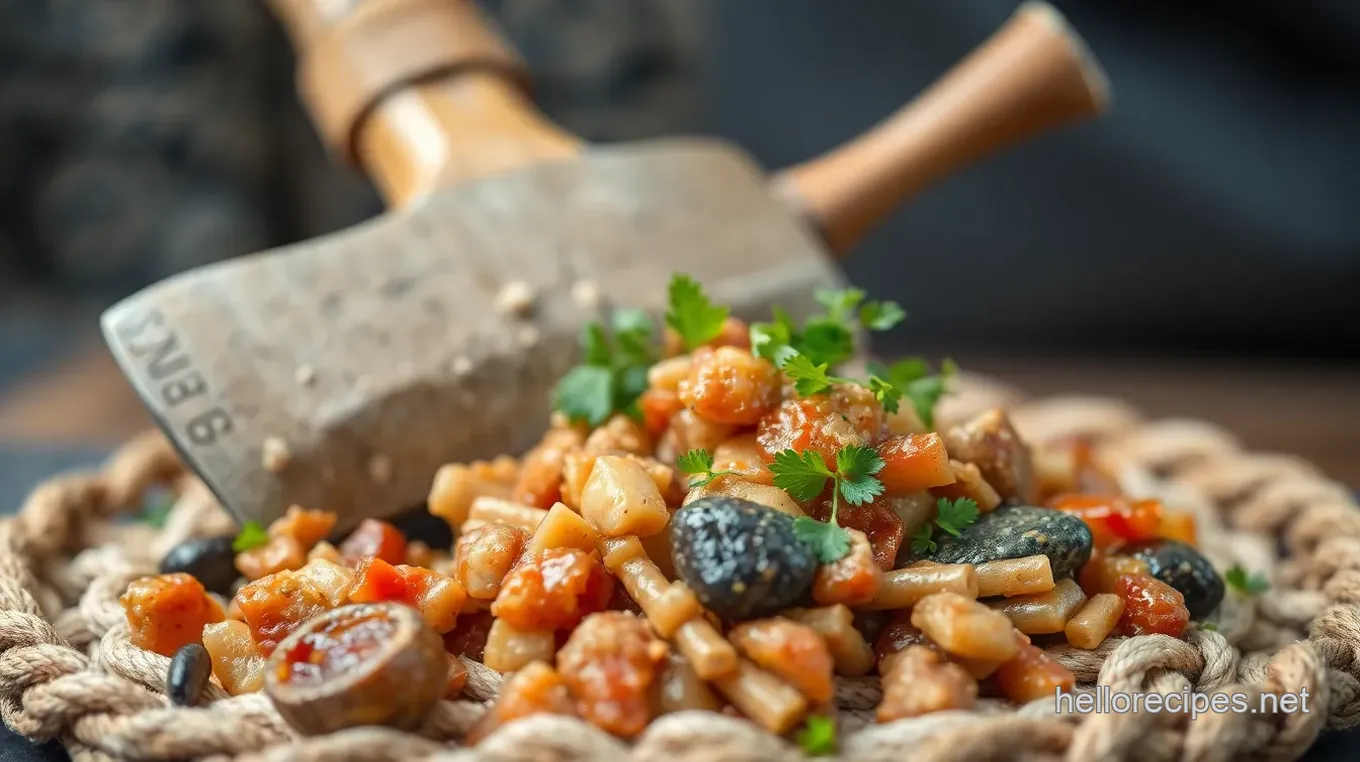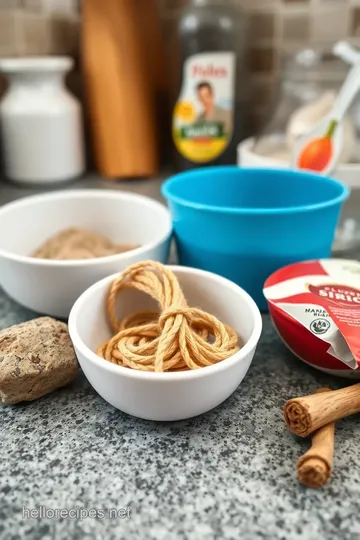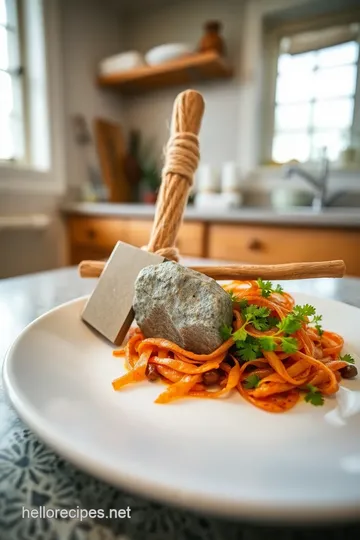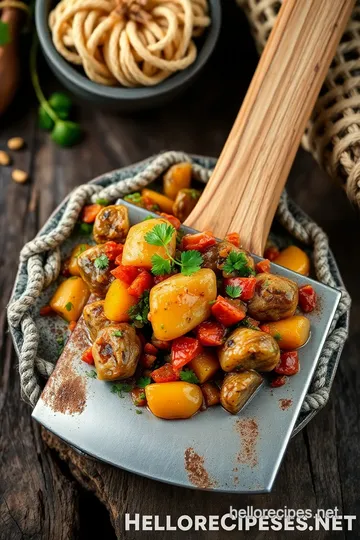Crafting a Stone Axe: Quick & Easy Tool Making
Looking to connect with ancient techniques? Join me as I share my experience crafting a stone axe—quick, easy, and a must for any outdoor enthusiast!

Craft Stone Axe: Quick & Easy Tool Making
Have you ever found yourself out in the wild with just your hands and no tools? oh my gosh, it can feel daunting! but guess what? with a little creativity and some ancient know-how, you can craft your own stone axe .
This diy adventure truly transforms your outdoor experience, giving you a reliable tool for wood chopping or setting up camp.
Trust me, it's easier than it sounds and super rewarding!
The Cool History Behind Stone Axes
So, let’s rewind for a second. the crafting of stone axes isn’t just some quirky hobby; it’s a practice that dates back to prehistoric times.
Our ancestors were making these stone tools long before stores stocked them in every aisle. they relied on simple techniques to create tools that helped them survive.
Today? the love for crafting these natural material tools is making a comeback! many folks are realizing that developing outdoor survival skills can be both essential and fun.
Plus, handmade tools just have a charm that you can't beat, right? nowadays, people are ditching the plastic and embracing eco-friendly tools made with their own hands.
A Quick Look at What You’ll Need
When it comes to expenditure, making a stone axe is actually pretty budget-friendly! you’re likely wandering in nature, so snagging a suitable stone and branch won’t cost you a dime.
Plus, you’ll whip it up in under an hour— 15 minutes to gather your materials and about 30 minutes of crafting.
It's a small time investment for a big satisfaction payout: one functional outdoor tool you made yourself!
Healthier Than It Looks!
While we’re not talking about food here, there are some serious benefits to using a stone axe. first off, it gets you outside, moving around, and appreciating nature—something we could all use more of! you’ll get that rustic craftsmanship feeling as you mold and shape your tool by hand.
And the best part? using a stone axe gives you a real connection to the ancient ways of living, which can be oddly soothing.
Not only is an axe like this a sturdy option for your wood chopping tools , it also serves as a fantastic centerpiece for campsite gatherings or survival skill workshops.
Perfect for impressing your friends or getting accolades at your next outdoor adventure get-together!
Why Make Your Own?
Now you might ask, “why not just buy an axe?” good question! crafting your own diy stone tools is about more than just having a functional item; it's about the experience.
Picture yourself sitting around the campfire, laughing with buddies, shaping your stone axe, and sharing stories about past adventures. it’s primal, it’s fun, and it connects you to the generations before you.
Plus, there’s something cool about showing off a tool you made yourself! whether you're gathering firewood or prepping a campsite, you’ll feel a little more accomplished every time you use your handcrafted tools .
It’s a conversation starter, a badge of honor, and a really neat way to bond over foraging and crafting experiences.
Moving to Ingredients!
Alright, my fellow crafting adventurers, are you ready to dive into what you need? from selecting the perfect stone to gathering your handle materials, each ingredient plays a key role.
Let’s get down to business and start gathering those items for our stone axe crafting project!

Essential Ingredients Guide
Okay, y’all! let’s dive into the essentials of cooking and crafting. when i'm whipping up something in the kitchen or stepping into the great outdoors to channel my inner caveman with a craft stone axe: quick & easy tool making , knowing my ingredients is everything.
Here’s a laid-back guide that'll help you strut into your culinary or diy adventures like a pro.
Premium Core Components
Ever wondered what makes a recipe or tool truly shine? detailed measurements are key! for instance, if a recipe calls for 2 cups of flour, that’s about 240 grams .
Don’t sweat it, though. just have a scale handy, and you’ll be golden.
Look for quality indicators when picking your ingredients, whether you’re buying spices or tools. fresh herbs should smell vibrant! dull-looking spices? nah, not today! and hey, remember to check the storage guidelines and shelf life .
Most spices are good for about 6 months; you don’t want to sprinkle stale cinnamon in your pie!
Now, freshness tips—always feel free to give those veggies a slight squeeze. are they firm? good! if they’ve turned mushy, it’s time for the compost.
Getting to know your selection criteria can elevate your kitchen game and your stone axe crafting, especially when sourcing materials like twigs or stones.
Signature Seasoning Blend
Spices and herbs are your best pals in the kitchen. creating an essential spice combination is a game-changer. think salt, pepper, and garlic powder—simple but oh-so-effective! if you wanna get fancy, mix some paprika with cumin for that smoky vibe.
Don’t forget about herb selections and pairings . basil is great with tomatoes, while rosemary shines next to roast chicken. but let’s not ignore the flavor enhancers and aromatics —like onion and garlic—those are what really bring a dish to life.
And for all you adventurous souls out there, consider the regional variations ! A pinch of curry powder for Indian dishes or some oregano for Mediterranean flair? Absolutely, yes!
Smart Substitutions
Sometimes, life throws you a curveball. maybe you’re outta lemon juice, or you just discovered your pantry is a little sparse.
No worries! there are common alternatives out there. for example, if you’re missing butter, coconut oil works perfectly in baked goodies.
Need to make some dietary modifications ? swap out dairy for almond milk or coconut yogurt! there’s always an option floating around.
And for those “oops” moments, think of emergency replacements ; ketchup instead of tomato paste can save the day.
Feeling seasonal? use fresh produce. it’s all about seasonal options like squash in the fall or berries in the summer.
You’ll find yourself creating dishes that not only taste great but feel fresh and alive.
Kitchen Equipment Essentials
Let’s chat tools! you need some must-have kitchen equipment to make life easier. a good chef’s knife? absolutely. and whether you’re a pro or just starting with alternative equipment options , don’t push those fancier gadgets aside.
Sometimes, a simple wooden spoon does the trick better than a high-tech mixer.
I’ve been there, feeling overwhelmed by prep. keep it simple! use a cutting board to chop fresh herbs and vegetables.
And how about some storage solutions ? glass containers are your ally, keeping everything organized and fresh for that spontaneous dinner party.
Wrapping It Up
So, whether you're crafting a stone axe for your next outdoor adventure or cooking up a feast for friends, don’t forget the foundation—the ingredients ! having a solid understanding of core components, signature seasonings, smart substitutions, and essential equipment can elevate your skills to new heights.
Are you excited? Great! Now let’s dive into those practical instructions, and bring your culinary and DIY adventure to life!
Mastering Professional Cooking: Your Step-by-Step Guide
Let’s dive into professional cooking ! whether you're whipping up dinner for your family or aspiring to be the next culinary sensation, nailing the basics is all on you.
From prep work to knowing when a dish is cooked to perfection, i’m here to share everything you need to succeed.
Spoiler alert: it’s easier than you think!
Essential Preparation Steps
First things first, let's talk about mise en place . this french term just means having everything in its place. gather your ingredients and tools before you start cooking.
Seriously, it makes a world of difference! you won’t be running around searching for that one spice while your pan is sizzling away.
Now, onto time management . it’s not just about cooking; it’s about keeping your cool in the kitchen. allocate specific times for each task.
Like, give yourself 10 minutes to chop veggies , then 10 minutes to marinate your proteins. trust me, watching the clock can keep you from burning dinner!
Next up, let’s get organized. keep your workspace tidy, and use containers for prepped ingredients. this is like the kitchen version of a clean room—way less stress! and don't forget about safety considerations .
Always use sharp knives (the dull ones are more accident-prone), and wash your hands often. who wants salmonella with their chicken, right?
Step-by-Step Process
Alright, let’s break down a typical cooking process into clear, numbered steps. This isn't rocket science; it’s just guidelines that can help you get it right every single time.
- Preheat your oven to the right temperature. For most baked goods, it’s usually 350° F .
- Prepare your ingredients : chop, dice, or arrange what you need!
- Cook your ingredients : adjust your cooking method based on what you’re making. Searing meat? Aim for a nice crust around 450° F .
- Check for doneness : Use visual cues like color and texture. For instance, chicken should reach an internal temp of 165° F . Nobody wants dry chicken!
- Let it rest : This is key. Allowing meat to rest helps keep it juicy and tender.
Timing precision invites the magic of cooking. Make a habit of using a timer— 5 minutes to sauté, 20 to roast , etc. It’ll keep things on track.
Expert Techniques
But here’s where the fun kicks in: professional methods! one critical step is to taste as you go. it’s your dish; make sure it’s perfect for your palette.
If something seems off, it’s a great opportunity to troubleshoot—maybe it needs salt or a splash of acidity.
Stick to quality checkpoints. when in doubt, look for the freshest ingredients. good produce makes all the difference! and if something goes wrong? no worries—learn from it.
Did the sauce break? try whisking it over low heat or adding a drop of water to bring it back together.
Success Strategies
Hands down, let’s chat about common mistakes. One biggie? Overcrowding the pan! It causes food to steam rather than sear. Remember, more space equals better caramelization.
If you want to ensure quality, have a taste test party with family and friends! their feedback can be priceless.
Plus, if you want to take it a step further, plan some make-ahead options . think meal preps or batch cooking so you always have a quick meal ready.
You might want to dive into something a little different, too! for example, craft stone axe: quick & easy tool making takes you outside, where primitive tool making taps into ancient craftsmanship techniques.
How cool is that? if you're into diy stone tools or need outdoor survival skills , it's like adding another feather to your cap!
Additional Information
As you explore more in the kitchen, think of your cooking as an ongoing process. each meal is a chance to grow, learn, and have some fun! the more you practice, the better you’ll become.
So grab your apron and let’s get cookin’! You’ve got this!

Pro Tips & Secrets
Alright, let’s dive in! crafting a stone axe can feel a bit intimidating, but i promise it’s not rocket science.
Here are some chef’s secrets and time-saving techniques to make your journey a breeze.
First off, find the right materials. a flat stone is your best bet, but don’t stress too much about getting it perfect.
Nature isn’t perfect, and that’s what makes your tool unique, you know? for the handle, look for a sturdy branch.
Just make sure it’s not rotting. nothing worse than chopping with a flimsy handle!
When you're shaping that axe head, take your time! use a hammerstone to chip away slowly—patience is key here. want a little boost in flavor enhancement? (well, in a primal sort of way!) every chip gives it character.
Also, if you can, smooth the edges for safety. trust me, no one wants a rough edge slicing their fingers!
Perfect Presentation
Now, let’s make sure your stone axe looks just as good as it works. when it comes to plating techniques for a tool, think of how you want to showcase your handy work.
Place your axe on an earthy backdrop—like a piece of bark or a spread of leaves. it’s rustic and captures that outdoor adventure gear vibe perfectly.
As for garnish ideas , maybe add some twine or foraged herbs around it. it gives a natural touch and makes it pop! consider your color combinations too.
A dark stone against a light wooden handle creates a stunning visual. you want this bad boy to shine on your instagram as much as it performs in the wild, am i right?
Storage & Make-Ahead
After crafting your primitive tool , you'll want to store it right. keep it dry! moisture is a no-go. a canvas bag or hanging it from a hook in a shed will keep it from getting damaged.
If you're planning on using it later, check for freshness—it's like monitoring your leftovers! your axe should feel robust and ready.
When you're reheating your excitement for this project, just take a moment to inspect all parts before heading out again. If you’ve taken good care, it should last ages!
Creative Variations
Here’s where the fun really starts! this is your chance to customize the axe to make it yours! consider flavor adaptations like changing up the stone type.
Different stones like quartz can give you a different feel and sharpness. you could even dip your toes into some seasonal twists—why not craft a “holiday” axe for festive camping trips?
If you’ve got unique dietary needs for your tools—okay, maybe just different aesthetics, play with the wood types for the handle! some folks love a lightweight poplar while others swear by a solid oak; it’s all about finding what works for your homesteading skills .
Complete Nutrition Guide
Okay, not a traditional nutrition guide here! but let’s break it down: knowing your materials and understanding their properties can save your behind.
For instance, did you know that flint can be sharper than most stones? choose your stone wisely, and you’re in for a reliable, long-lasting tool.
And remember, this isn’t just about crafting; it’s about embracing ancient methods and connecting with the world around you. engaging in this rustic craftsmanship not only sharpens your outdoor survival skills but can add a new layer to your experience in the wild.
Expert FAQ Solutions
Got questions? I hear ya! One common one is, “What if my axe head won’t stay secured?” Well, here’s a tip: use tape or duct tape temporarily, but make sure to switch back to twine for a tight fit when you can!
Another typical query is, “how can i ensure my axe is properly balanced?” it’s all about the proportion of the head to the handle.
If it feels awkward, take a little off one end or the other. you're the artist here, make it comfortable.
Conclusion
So there you have it! crafting a stone axe: quick & easy tool making doesn’t have to be a chore.
It's all about patience, a bit of creativity, and a good ole’ handful of spirit. don’t worry if you hit a snag along the way; we all do! just remember, every axe tells a story—make yours a good one.
Whether you’re honing your bushcraft techniques or just having fun in the wild, get out there and start crafting! happy axing, friends!

Crafting a Stone Axe: Quick & Easy Tool Making Card

⚖️ Ingredients:
- 1 flat, solid stone (about 4-6 inches long)
- 1 sturdy branch (about 12-18 inches long, ideally 1-2 inches in diameter)
- Natural twine or cord (approximately 2-3 feet)
- Sandpaper or a rock (for smoothing edges, optional)
- Hammerstone or another hard object for shaping the axe head
- Knife or sharp stone (for trimming the handle)
- Chisel or sharp-edged rock (optional for detailed shaping)
🥄 Instructions:
- Step 1: Find a flat, strong stone and a sturdy branch.
- Step 2: Use the hammerstone to chip away at the edges of the stone, creating a pointed or beveled edge. Smooth the edges with sandpaper or a rock.
- Step 3: Trim the branch to a desired length using a knife or sharp stone
- Step 4: Insert the unshaped end of the handle into the hole of the axe head and ensure a tight fit; adjust if necessary.
- Step 5: Use natural twine to bind the axe head to the handle tightly. Make sure the wrapping is tight and secure to prevent movement.
- Step 6: Inspect the axe for stability and sand down any rough edges for safety and comfort.
Previous Recipe: Quick & Delicious Glazed Salmon with Ginger & Veggies | 30 Min
Next Recipe: Easy Blend Berry Smoothie - Delicious & Healthy Morning Boost
